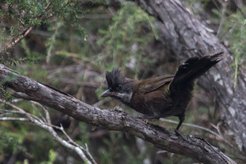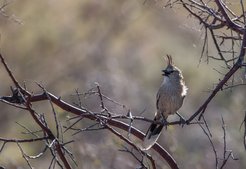The rules of colour: rainfall and temperature predict bird colouration on a global scale
Precipitation and temperature can be used to predict the colouring of birds

A new study reveals that variation in climate can affect the colours of birds, shedding light on classic biological rules.
Nearly 200 years ago, Constantin Gloger noticed that animals living in tropical regions tend to be more pigmented. His observations, and that of others, were synthesised into Gloger’s rule. In its simple version this rule predicts that animals should be darker in warmer and wetter regions, possibly because darker animals are better camouflaged in shady habitats, such as in tropical rainforests.
Gloger’s rule seems to partly conflict with another rule explaining colour variation in animals: Bogert’s rule, also referred to as the thermal melanism hypothesis. This rule predicts darker animals in colder regions, because darker colours absorb more solar radiation which helps with thermoregulation. Which of these two rules is followed seems to vary among animals, and hence it remains unclear whether they apply in general.
Depending on the species, both rules apply

A global analysis of bird plumage colour variation by an international team of ornithologists, including Monash University in Australia, Massey University in New Zealand and the Max Planck Institute for Ornithology in Germany, now reveals that darker coloured birds are found in regions with high rainfall and colder temperatures, thus providing general support for both rules.
The research examines colour variation across nearly 6000 species of passerines, the largest group of birds. The global scale of the study allowed the researchers not only to comprehensively test both rules, but also to determine why some groups of birds sometimes do not seem to follow them. “We found quite a bit of variation across different regions of the world in how closely birds followed the rules” says Kaspar Delhey, lead author of the study. “For example, in South America there seems to be no correlation between coloration and temperature and we wondered what could be the reason.”
It turns out that both rules can interfere with each other. In particular, the precipitation effect can obliterate the weaker temperature effect. In regions where climate ranges from cold-and-dry to hot-and-humid, the lightening effect of temperature is swamped by the darkening effect of rainfall. On the other hand, when climate varies from hot-and-dry to cold-and-wet, the rules reinforce each other and their effects become stronger. ”The type of climatic gradient determines whether both rules work together or against each other and this can explain why certain groups of animals seemingly fail to follow the rules”, says Bart Kempenaers, last author of the study.
Understanding how animal form and function is shaped by climate is particularly relevant today, given the current models of climate change, which predict increases in temperature and changes in precipitation patterns. Geographic variation in coloration, such as described by Gloger’s and Bogert’s rules, can provide hints on how animals have adapted to past variation in climate. The new research thus provides a general framework that can be used to understand how future changes in climate will affect animals.













